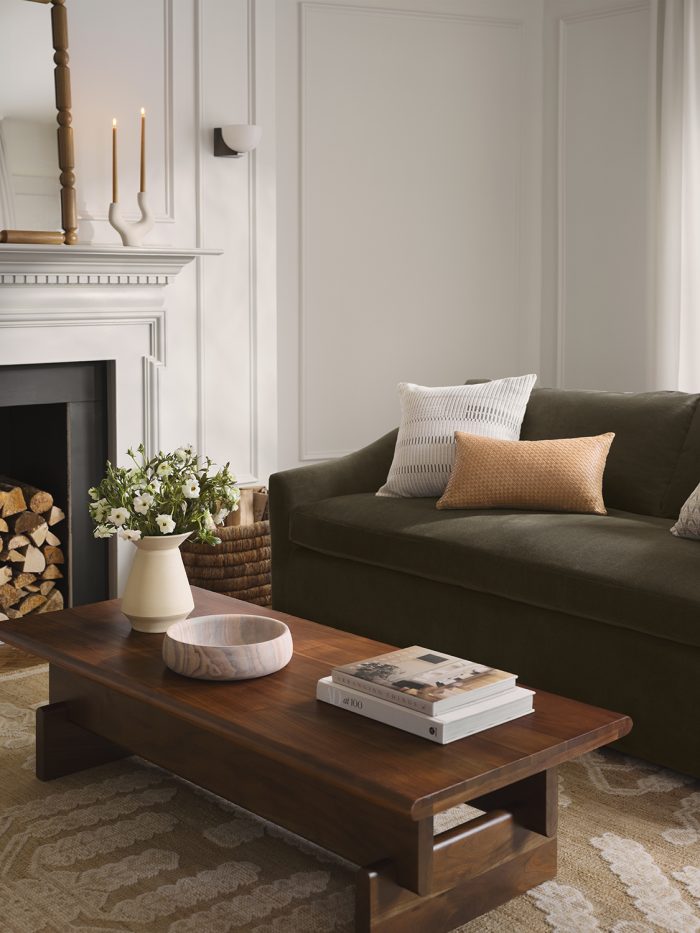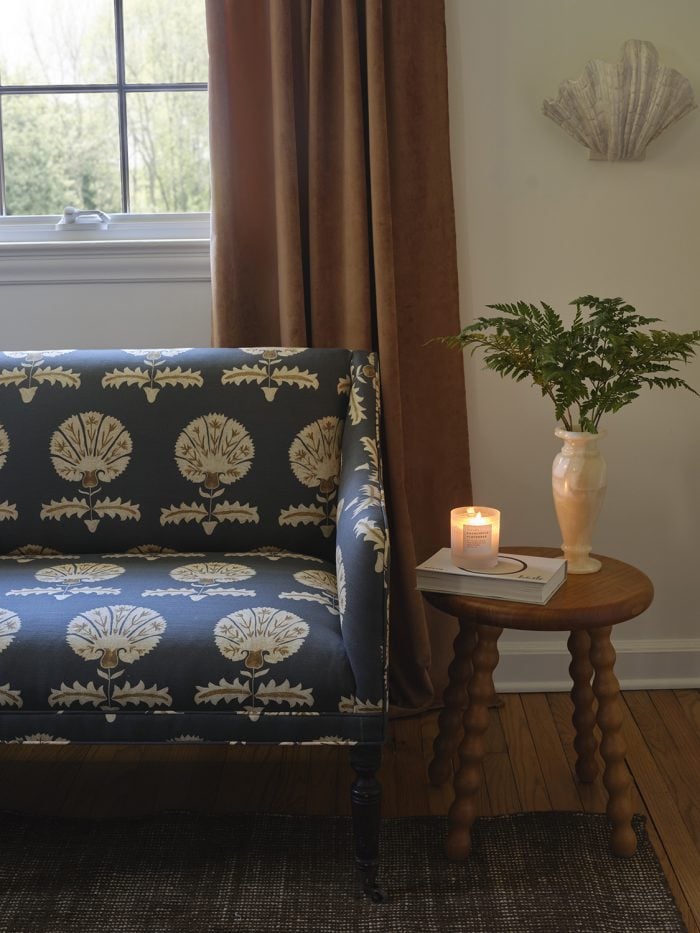Think about the last really mouthwatering dish you had—the way its various flavors and textures created a moment of culinary artistry (and a meal you can’t forget). No single ingredient stood out or overpowered the others. And no matter how different each component was in its original form—an acid here, an aromatic there—they came together for the greater good: a dish in which the whole was more than the sum of its parts.
Cooking is an apt metaphor for the art of layering in interior design. Layering is all about artfully arranging your decor in a way that adds visual intrigue while appearing effortless and pulled-together, not contrived or cluttered. A well-layered home is a home that feels unique, personalized, cozy, and not unlike a Nancy Meyers movie set (swoon).
Sound tough to pull off? Fortunately, it’s not! And best of all, it’s totally free. Ahead, find our designer’s exclusive tips to develop your personal recipe for layering success.
1. Layering in Interior Design: Variety

The end goal in layering a great room or a tiny styling moment is the same: to arrange pieces of different shapes, patterns, textures and colors to play off one another, which in turn adds depth and dimension to any space, no matter the size. In layering as in life, variety is the spice.
Let’s start with a simple example: Imagine a side table that holds a tall, slender lamp behind a large decorative bowl, next to a beautiful bouquet of flowers perched atop coffee table books. Now mentally break those items down to their most basic shapes. The lamp and its shade are cylinders. The bowl is a hemisphere. The books are cuboids, and the flowers have graceful, organic contours.
What’s at play here? Only the starting point for every effective layered look: pleasing contrasts in heights, weights and shapes that create an overall visual harmony.
2. Layering in Interior Design: Embrace Asymmetry

Once you know what items you want to feature in your space, start with the largest or most functional piece — the oversized painting you inherited or the area’s light source — and build around that. Add a decor accent or two off to one side of your central item, keeping things deliberately off-kilter.
Your goal in layering is not to create something matchy-matchy or symmetrical, which is old-fashioned and flat. Asymmetry is not only more modern and sophisticated but also infinitely more interesting to the eye.
3. Layering in Interior Design: Go Odd

The Rule of Three is a rock-solid rule of thumb in interior design: Odd numbers of items simply have more visual appeal than even numbers. And three seems to be the magic number.
The Rule of Three can apply to virtually any item in your space: stacks of coffee table books, pillow groupings, gallery walls, picture ledges, and hanging plants. It’s also the foundation of this simple formula for a dynamic styling moment, in which you combine three items:
- Something vertical item (such as tapered candlesticks)
- Something horizontal (like a lacquered tray) and
- Something sculptural (a contemporary art vase).
4. Layering in Interior Design: Overlap

To create additional visual interest, overlap pieces, whether its throw pillows, window treatments or even furniture (i.e. the bench at the end of your bed). This guideline could apply to:
- Bookshelves. Unless you live in a library, not every book or object has to be seen, top to bottom, in its entirety.
- An entry console or fireplace mantel, where you can lean smaller frames slightly in front of larger frames.
- Floors. Layering rugs of different patterns, textures, colors and, for lack of a better word, cushiness adds personality to a room from the ground up.
5. Layering in Interior Design: Take Your Time

A layered look is a work in progress. The aim is always to curate a lived-in aesthetic, not a calculated arrangement. As you add a piece here and subtract a piece there and shift other items around, you’ll arrive at a composition that just feels right. Trust your eyes and your gut. They won’t lie. You’ll know when you’ve arrived at a layered look that suits your individual tastes.
Want expert advice on your own space, straight from an interior designer? Get started today with our style quiz.


